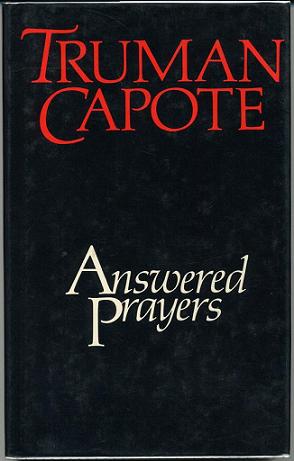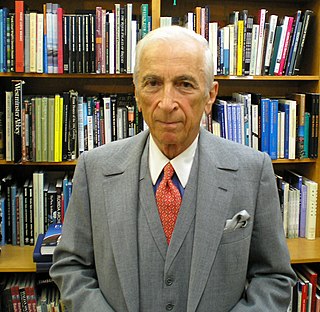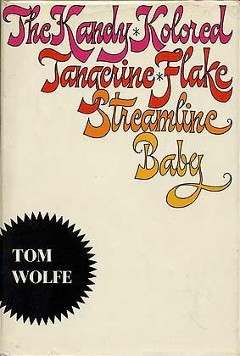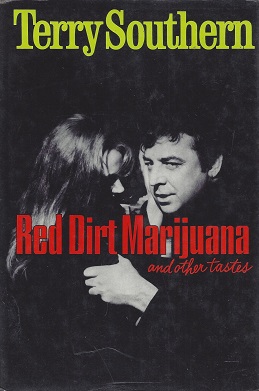Manifesto
The first section of the book consists of four previously published texts by Wolfe: The Feature Game and Like a Novel (published as The Birth of "The New Journalism": An Eyewitness Report and The New Journalism: A la Recherche des Whichy Thickets, in the New York Magazine, on February 14 and February 21, 1972); Seizing the Power and Appendix (published as Why They Aren't Writing the Great American Novel Anymore, in Esquire , December 1972).
The text is a diatribe against the American novel which Wolfe sees as having hit a dead end by moving away from realism, and his opinion that journalism is much more relevant. In effect, his manifesto is for mixing journalism with literary techniques to document in a more effective way than the novel. These techniques were most likely inspired by writers of social realism, such as Émile Zola and Charles Dickens. His manifesto for New Journalism (although he had no great affection for the term) has four main points.
- Scene by scene construction. Rather than rely on second-hand accounts and background information, Wolfe considers it necessary for the journalist to witness events first hand, and to recreate them for the reader.
- Dialogue. By recording dialogue as fully as possible, the journalist is not only reporting words, but defining and establishing character, as well as involving the reader.
- The third person. Instead of simply reporting the facts, the journalist has to give the reader a real feeling of the events and people involved. One technique for achieving this is to treat the protagonists like characters in a novel. What is their motivation? What are they thinking?
- Status details. Just as important as the characters and the events, are the surroundings, specifically what people surround themselves with. Wolfe describes these items as the tools for a "social autopsy", so we can see people as they see themselves.

Truman Garcia Capote was an American novelist, screenwriter, playwright, and actor. Several of his short stories, novels, and plays have been praised as literary classics, including the novella Breakfast at Tiffany's (1958) and the true crime novel In Cold Blood (1966). His works have been adapted into more than 20 films and television productions.

Thomas Kennerly Wolfe Jr. was an American author and journalist widely known for his association with New Journalism, a style of news writing and journalism developed in the 1960s and 1970s that incorporated literary techniques. Much of Wolfe's work was satirical and centred on the counterculture of the 1960s and issues related to class, social status, and the lifestyles of the economic and intellectual elites of New York City.

In Cold Blood is a non-fiction novel by the American author Truman Capote, first published in 1966. It details the 1959 murders of four members of the Clutter family in the small farming community of Holcomb, Kansas.

Esquire is an American men's magazine. Currently published in the United States by Hearst Communications, it also has more than 20 international editions.

Creative nonfiction is a genre of writing that uses literary styles and techniques to create factually accurate narratives. Creative nonfiction contrasts with other nonfiction, such as academic or technical writing or journalism, which are also rooted in accurate fact though not written to entertain based on prose style. Many writers view creative nonfiction as overlapping with the essay.
New Journalism is a style of news writing and journalism, developed in the 1960s and 1970s, that uses literary techniques unconventional at the time. It is characterized by a subjective perspective, a literary style reminiscent of long-form non-fiction. Using extensive imagery, reporters interpolate subjective language within facts whilst immersing themselves in the stories as they reported and wrote them. In traditional journalism, the journalist is "invisible"; facts are meant to be reported objectively.

Answered Prayers is an unfinished novel by American author Truman Capote, published posthumously in 1986 in England and 1987 in the United States.

Gaetano "Gay" Talese is an American writer. As a journalist for The New York Times and Esquire magazine during the 1960s, Talese helped to define contemporary literary journalism and is considered, along with Tom Wolfe, Joan Didion, and Hunter S. Thompson, one of the pioneers of New Journalism. Talese's most famous articles are about Joe DiMaggio and Frank Sinatra.
Clay Schuette Felker was an American magazine editor and journalist who co-founded New York magazine in 1968 and California magazine in 1976. He was known for bringing numerous journalists into the profession. The New York Times wrote in 1995, "Few journalists have left a more enduring imprint on late 20th-century journalism—an imprint that was unabashedly mimicked even as it was being mocked—than Clay Felker."

Hooking Up is a collection of essays and a novella by American author Tom Wolfe, a number of which were earlier published in popular magazines.
Narrative journalism, also referred to as literary journalism, is defined as creative nonfiction that contains accurate, well-researched information. It is related to immersion journalism, where a writer follows a subject or theme for a long period of time and details an individual's experiences from a deeply personal perspective.

The Kandy-Kolored Tangerine-Flake Streamline Baby is the title of Tom Wolfe's first collected book of essays, published in 1965. The book is named for one of the stories in the collection that was originally published in Esquire magazine in 1963 under the title "There Goes That Kandy-Kolored (Thphhhhhh!) Tangerine-Flake Streamline Baby (Rahghhh!) Around the Bend (Brummmmmmmmmmmmmmm)…" Wolfe's essay for Esquire and this, his first book, are frequently hailed as early examples of New Journalism.

Harold Thomas Pace Hayes was an American journalist and writer best known as an editor for Esquire magazine from 1963 to 1973. He was a main architect of the New Journalism movement.

Red-Dirt Marijuana and Other Tastes (ISBN 0-8065-1167-2) is a collection of short fiction and essays works by satirical novelist and screenwriter Terry Southern, which was first published in 1967.
The non-fiction novel is a literary genre that, broadly speaking, depicts non-fictional elements, such as real historical figures and actual events, woven together with fictitious conversations and uses the storytelling techniques of fiction. The non-fiction novel is an otherwise loosely defined and flexible genre. The genre is sometimes referred to using the slang term "faction", a portmanteau of the words fact and fiction.

"Frank Sinatra Has a Cold" is a profile of Frank Sinatra written by Gay Talese for the April 1966 issue of Esquire. The article is one of the most famous pieces of magazine journalism ever written and is often considered not only the greatest profile of Frank Sinatra but one of the greatest celebrity profiles ever written. The profile is one of the seminal works of New Journalism and is still widely read, discussed and studied. In the 70th anniversary issue of Esquire in October 2003, the editors declared the piece the "Best Story Esquire Ever Published". Vanity Fair called it "the greatest literary-nonfiction story of the 20th century". The illustrations that accompanied the original article were made by Edward Sorel, who also did the artwork for the Esquire issue's front cover.
"Stalking the Billion-Footed Beast" is an essay by Tom Wolfe that appeared in the November 1989 issue of Harper's Magazine criticizing the American literary establishment for retreating from realism.
"Pornoviolence" is an essay by American author Tom Wolfe. It first appeared under a longer title in the July 1967 issue of Esquire magazine, and was later published in the collection Mauve Gloves & Madmen, Clutter & Vine. The essay introduced the term "pornoviolence" in reference to graphic written or audiovisual depictions of violence, which Wolfe argued were used in newspapers, magazines, and film to stimulate prurient audience interest.
Byron Dobell was an American editor and artist. He is considered "one of the most respected and accomplished editors in New York magazine publishing history," the editor of several popular American magazines, including American Heritage and Esquire. He is credited with helping the early careers of many writers such as Tom Wolfe, David Halberstam and Mario Puzo. In 1998, Dobell was inducted into the American Society of Magazine Editors Hall of Fame.

"Superman Comes to the Supermarket" is an essay by the American novelist and journalist Norman Mailer about the 1960 Democratic convention. Originally published in Esquire as "Superman Comes to the Supermart," this essay was Mailer's initial foray into political journalism. It characterizes John F. Kennedy as a potential "existential hero" who could revitalize the US after eight years under Dwight D. Eisenhower to rediscover its lost imagination. "Superman" further develops and emphasizes Mailer's concern with the importance of the individual's will and creativity that must challenge conformity and obedience in American life to fully realize a genuine life. With "Superman", Mailer extends New Journalism by taking an active role in the narrative, which would characterize much of his subsequent journalistic style and lead to his Pulitzer Prize for The Armies of the Night in 1968.













